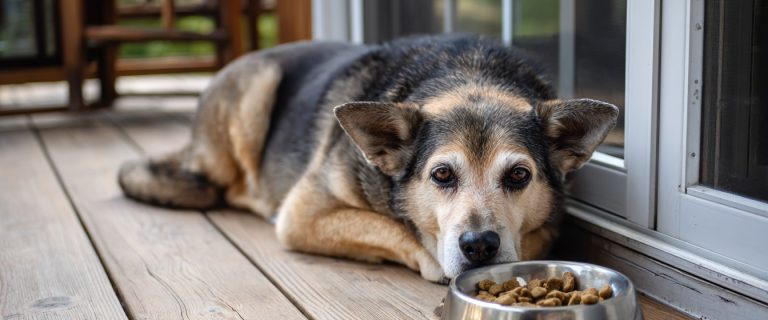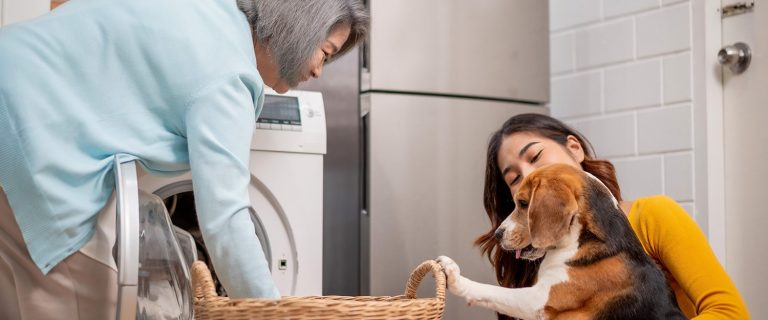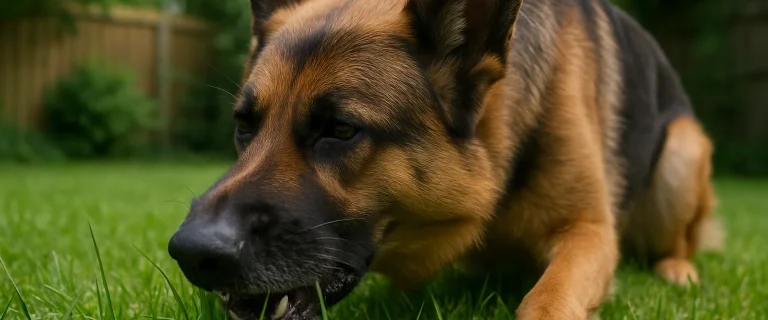Canine parvovirus is a particularly nasty viral disease that affects dogs.
It is highly contagious, extremely aggressive, and almost always deadly.
I recently came across a post in one of the dog forums asking if it was okay for the owner to take her dog outside after he’d gotten the parvo vaccine.
In the body of the question, she relayed some incredibly dire information about her guy, how he got parvo, how he was misdiagnosed, and how improper treatment almost killed him.
That’s why I’m going to give you the low down on canine parvovirus today.
With this information, you’ll be able to spot the symptoms of the disease and learn why it’s so important to prevent it.
1. What is Canine Parvovirus
As I said, this disease is nasty. It’s so contagious, if there were a canine CDC, it would be on their list of watch-outs.
In addition to being highly contagious, it is very aggressive. When parvo enters a dog’s body, it divides rapidly.
The virus primarily attacks the dog’s digestive tract, but it also attacks and destroys white blood cells. This combination causes severe internal bleeding of the GI tract and an inability to fight the virus due to the breakdown of white blood cells.
If left untreated, canine parvovirus is almost always fatal.
In addition to that, it’s hard to kill, which makes it imperative to quarantine an infected dog and clean the area with a heavy bleach solution. If an area is not quarantined and cleaned properly, the virus can run rampant throughout a dog population – be it dogs at home or patients of a veterinary hospital.
In short, parvo is extremely bad news.
2. How is Canine Parvovirus Transmitted
The rate of transmission of this disease is so great that, in human terms, it would be classified as epidemic proportions. The disease can be transmitted by any person, animal, or object that comes into contact with the feces of an infected dog.
In addition, the disease is so hard to kill, it can live on surfaces like food bowls, shoes, clothing, carpeting, and hard floors for months. This makes it even more dangerous because humans or dogs could come into contact with an infected area and not even know it.
FYI, while there are forms that affect humans, like parvovirus B19 (aka Fifth Disease), canine parvovirus cannot spread to humans, just like human parvo can’t spread to dogs. Dog parvo also doesn’t spread to cats, although they have their own parvo virus that’s also highly contagious within the species.
That said, you can come into contact with the virus and carry it home to your dog on your clothing, shoes, or other belongings.
3. Symptoms of Canine Parvovirus
The symptoms of parvo are important to know and spot. When this virus is in play, time is not on a dog’s side so the sooner the threat is recognized, the sooner it can be treated. As the American Veterinary Medical Association explains, death will occur within 48-72 hours after symptoms begin.
Symptoms include:
- Lethargy
- Severe vomiting
- Loss of appetite
- Bloody, foul-smelling diarrhea
While you should always take your dog to the vet if he shows any signs of vomiting or diarrhea, it’s even more important if he has “parvo diarrhea.” The smell is very distinct. It is an acrid, foul smell that will gag almost anyone, no matter how strong their stomach may be.
Related:Know the 6 Signs of Dehydration in Dogs & How To Treat Them
4. Treating Canine Parvovirus
Early treatment of the virus is key to a dog’s survival. In addition to being one of the most aggressive and deadly viruses in the dog world, there is also no drug available that kills the virus. Instead, treatment consists of supportive care in a veterinary hospital to help the dog fight off the virus.
This care includes:
- IV fluids to combat dehydration and replace lost electrolytes
- antibiotics
- medication to control vomiting and diarrhea
- and other supportive therapy.
Treatment can last anywhere from a few days to a couple of weeks, and the cost is significant to treat. While deaths still do occur even when caught early, survival rates are around 90% as long as your dog receives proper treatment.
5. About the Parvovirus Vaccine
Parvo may be an intensely aggressive and deadly virus, but it can be prevented quite easily. All a dog needs is a vaccination against the disease.
It’s important to understand that, just like babies need a series of vaccines, your dog will need a series of parvo shots to provide complete protection. Expect to get your puppy the parvo shot at 8, 12, and 16 weeks.
While some vets set a slightly different vaccination schedule, there’s really no point in giving the parvo vaccine before 8 weeks. Up until then, your puppy still has mom’s immunity. According to VetInfo, giving the shot before 8 weeks can actually be harmful to your pup.
Another thing to note: some breeds, like Dobermans, actually require an additional shot at 20 weeks. Your vet will help you determine the best vaccination schedule for your breed.
6. Can I take my puppy out after he gets the parvo shot?
In answer to the original question, yes, you can take your puppy out once the series of parvo shots is complete. Until then, use extreme caution. While you can’t keep your pup indoors all day every day, stick to your own yard for potty breaks as much as possible. Avoid taking your pup to parks, groomers, or stores that allow dogs until his protection is complete.
In the case of canine parvovirus, the old adage “an ounce of prevention is worth a pound of cure” is particularly true. Canine parvovirus is aggressive, painful, difficult to treat, and very deadly.
The best way to combat the disease is to prevent it altogether. Vaccination against this virus is absolutely key.
If you have a dog, always be sure that he is vaccinated against canine parvovirus. If you do that, the rest of this post won’t even matter, and that’s really what you want in a case like this.
Have you ever dealt with canine parvovirus? Share your tips and experiences below.
Author
-

A former Veterinary Assistant at Southwest Animal Care Hospital, Ben is an animal lover, blogger, and all-around geek. Along with writing for DogVills, Ben runs his own virtual assistant company, BizzyBim.
View all posts




